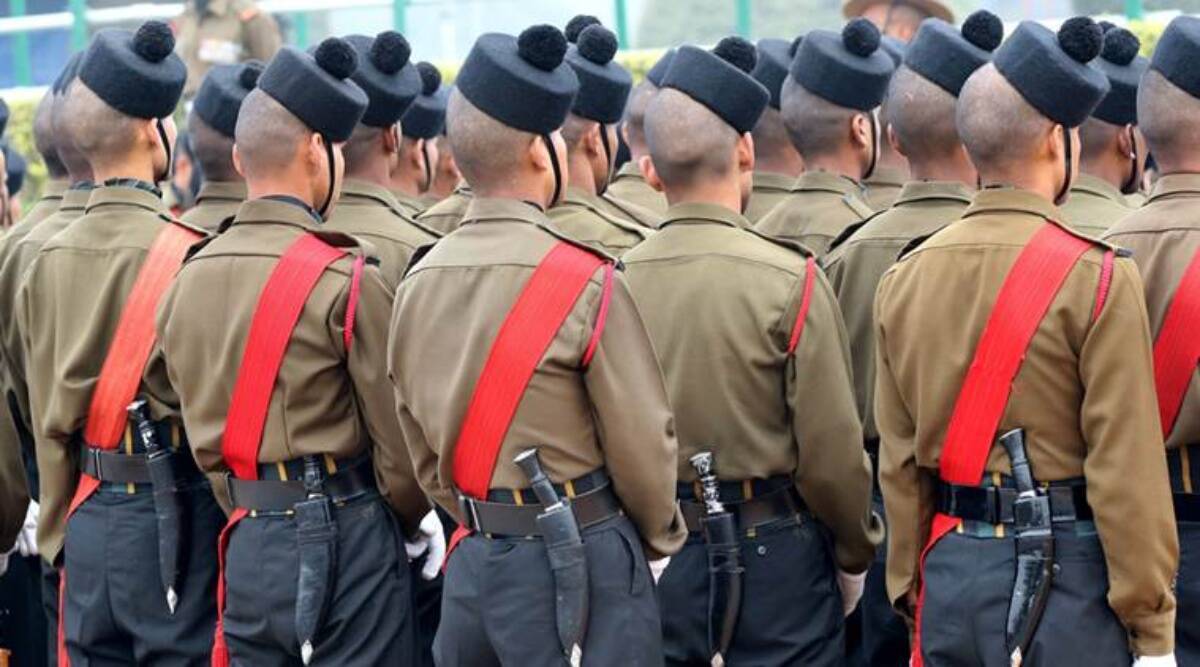 Experts are of the view that the changed terms and conditions of service in the Indian Army in no way violate these agreements as they are not discriminatory. Active political, diplomatic and military engagements at different levels of officialdom must be undertaken to allay misconceptions about the Agniveer police, fuelled by irresponsible statements. (Express photo by Ravi Kanojia)
Experts are of the view that the changed terms and conditions of service in the Indian Army in no way violate these agreements as they are not discriminatory. Active political, diplomatic and military engagements at different levels of officialdom must be undertaken to allay misconceptions about the Agniveer police, fuelled by irresponsible statements. (Express photo by Ravi Kanojia) The Agnipath recruitment plan for the Indian armed forces has witnessed intense debate. The new proposal for recruiting 45,000 personnel annually, assures a tenure of four years after which 25 per cent of those recruited in that year will be retained, while the remainder will be discharged with a handsome severance package along with options for priority enrolment in selected corporates and PSUs. The major apprehension is concerning the mid- and long-term impact of the scheme on the effectiveness of the armed forces. The timing of this move is a concern, especially when the armed forces are contemplating major organisational changes, there are tensions with China, and there is no change in Pakistan’s stance.
But that is not the issue of focus here. What is of concern is the recruitment of the Gorkha soldiers from Nepal, which forms a critical subset of the manpower planning and recruitment for the army. This is central to the alarming deficiencies in manpower of the armed forces, an outcome of the no recruitment policy followed for over two years during the peak period of the pandemic.
Let me share a few statistics to put the Indian army recruitment process in perspective. The army has approximately 60,000 retirements annually. Considering the gaps over the past two years, the annual recruitment of 45,000 may fall short of mitigating existing deficiencies. The criticality will be severe after the fourth year of the policy implementation when the first batch of Agniveers completes their tour of duty. The new policy in all probability will allocate vacancies for the recruitment to the states based on a complex formula on the Recruitable Male population (RMP) of each State. But, for the approximately 40 Gorkha infantry battalions, 50 per cent of the manpower has traditionally been Nepal domiciled Gorkhas (NDGs), while the remainder is from the Indian Gorkha population. This works out to approximately 25,000-30,000 NDGs in the army.
The Indian government was not given permission for proposed recruitment rallies in end August and early September in Nepal is of deep concern. This has strategic ramifications for India as this event follows the combative stance adopted by Nepal on the boundary issue. It also raises questions about India’s outreach and relations with its South Asian neighbours.
Military relations continue to be an important foundation of our bilateral relations with Nepal. This is seen in the practice of granting the status of “Honorary Chief” by each country to the other’s army chief. The current Indian COAS has just been honoured during his recent official visit to Nepal. Also, pensions and salaries of Gorkha soldiers who have served or are serving in the Indian Army constitute a major part of Nepal’s foreign remittances.
Nepal’s recent posture is likely due to the shortened period of assured service for Agniveers, and their reemployment thereafter. In my opinion, that is not the main stumbling block. It has become an excuse to give impetus to the long-standing debate on permitting Nepalese citizens into the Indian Armed Forces. This has also been an issue highlighted by Nepal’s communists. The current delay may be part of political gamesmanship in Nepal as its national elections are due at the end of 2022. However, if looked at pragmatically, based on my interactions, the current generation of Nepalese youth will look at this scheme as a means to give shape to their dreams. The limited service will give them a ready corpus to either become entrepreneurs or use it to re-educate/reskill themselves to work abroad.
Historically, Gorkha citizens from Nepal have served in the Indian Army since well before Independence. Manpower recruitment ex Nepal, was formalised at the time of Independence in May 1947, under a tripartite treaty between Nepal, the UK and India, called the Memorandum of Agreement on Recruitment of Gorkha Troops. It was agreed that the Gorkha soldiers will serve without discrimination. This right was reinforced in the 1950 Indo-Nepal Peace Treaty that empowered Nepalese nationals to work in India as equals. Experts are of the view that the changed terms and conditions of service in the Indian Army in no way violate these agreements as they are not discriminatory.
So, the following course of action should be adopted. First, active political, diplomatic and military engagements at different levels of officialdom must be undertaken to allay misconceptions about the Agniveer police, fuelled by irresponsible statements. Second, a reconsideration of the terms of employment of the Nepalese Gorkha Agniveers by the Government of India and highlighting the advantages of shorter tenures. Third, formalising specially tailored reskilling schemes for the discharged Gorkha soldiers. And last, there is a need for greater sensitivity to Nepal from the Indian government.
The writer is a former Army Commander of the Indian Army